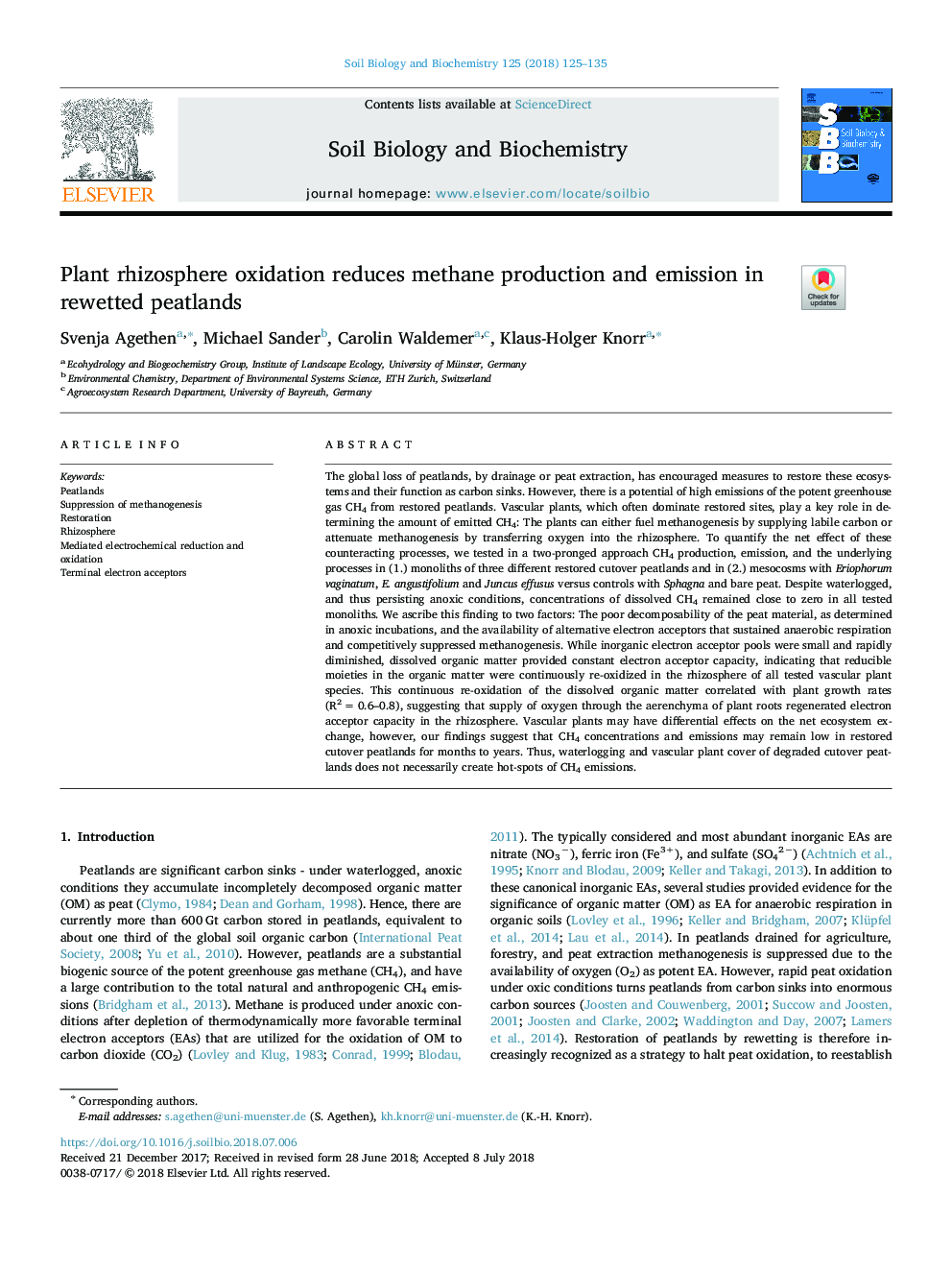| کد مقاله | کد نشریه | سال انتشار | مقاله انگلیسی | نسخه تمام متن |
|---|---|---|---|---|
| 8362446 | 1542559 | 2018 | 11 صفحه PDF | دانلود رایگان |
عنوان انگلیسی مقاله ISI
Plant rhizosphere oxidation reduces methane production and emission in rewetted peatlands
ترجمه فارسی عنوان
اکسیداسیون گیاه ریزوسفر باعث کاهش تولید و انتشار گازهای گلخانه ای در زمین های زراعی شده می شود
دانلود مقاله + سفارش ترجمه
دانلود مقاله ISI انگلیسی
رایگان برای ایرانیان
کلمات کلیدی
بوته ها، سرکوب متانوژنز، ترمیم، ریزوسفر، کاهش الکتروشیمیایی و اکسیداسیون، گیرنده های الکترون های ترمینال،
موضوعات مرتبط
علوم زیستی و بیوفناوری
علوم کشاورزی و بیولوژیک
دانش خاک شناسی
چکیده انگلیسی
The global loss of peatlands, by drainage or peat extraction, has encouraged measures to restore these ecosystems and their function as carbon sinks. However, there is a potential of high emissions of the potent greenhouse gas CH4 from restored peatlands. Vascular plants, which often dominate restored sites, play a key role in determining the amount of emitted CH4: The plants can either fuel methanogenesis by supplying labile carbon or attenuate methanogenesis by transferring oxygen into the rhizosphere. To quantify the net effect of these counteracting processes, we tested in a two-pronged approach CH4 production, emission, and the underlying processes in (1.) monoliths of three different restored cutover peatlands and in (2.) mesocosms with Eriophorum vaginatum, E. angustifolium and Juncus effusus versus controls with Sphagna and bare peat. Despite waterlogged, and thus persisting anoxic conditions, concentrations of dissolved CH4 remained close to zero in all tested monoliths. We ascribe this finding to two factors: The poor decomposability of the peat material, as determined in anoxic incubations, and the availability of alternative electron acceptors that sustained anaerobic respiration and competitively suppressed methanogenesis. While inorganic electron acceptor pools were small and rapidly diminished, dissolved organic matter provided constant electron acceptor capacity, indicating that reducible moieties in the organic matter were continuously re-oxidized in the rhizosphere of all tested vascular plant species. This continuous re-oxidation of the dissolved organic matter correlated with plant growth rates (R2â¯=â¯0.6-0.8), suggesting that supply of oxygen through the aerenchyma of plant roots regenerated electron acceptor capacity in the rhizosphere. Vascular plants may have differential effects on the net ecosystem exchange, however, our findings suggest that CH4 concentrations and emissions may remain low in restored cutover peatlands for months to years. Thus, waterlogging and vascular plant cover of degraded cutover peatlands does not necessarily create hot-spots of CH4 emissions.
ناشر
Database: Elsevier - ScienceDirect (ساینس دایرکت)
Journal: Soil Biology and Biochemistry - Volume 125, October 2018, Pages 125-135
Journal: Soil Biology and Biochemistry - Volume 125, October 2018, Pages 125-135
نویسندگان
Svenja Agethen, Michael Sander, Carolin Waldemer, Klaus-Holger Knorr,
